|
I had been teaching elementary school general music for about six years when I was told I was going to direct a middle school chorus. Now mind you, I had never taught a chorus before. I hadn't participated in a chorus since I was in high school. And in college, I was not required to be in a chorus nor did I opt to be in a vocal group. Let’s not kid ourselves. I sang and played Fender bass in a wedding band, played double bass in road bands and an after-hours club in Philly, and subbed on either trumpet or bass in a band at a strip show at the Troc. My pedigree was spotty to say the least. All this is to say: I had no real concept of choral singing. The most I had done concerning choral singing with my elementary school kids was basic two-part stuff, and that was only occasionally. I started amping up my piano chops – I knew it would be a crucial need given the accompaniments I would have to pull off. Once I started doing research, I discovered a chorus I admired: the Glen Ellyn Children's Chorus of Chicago. I decided to model our sound after theirs. That led me to my discovery of Doreen Rao and her epic editorial work with Boosey and Hawkes. Her choral works for beginning choruses were just what I needed. In elementary general music, I never approached music class as just a venue where I threw out music skills, terms, goals, and performances. The music work was all ancillary to the bigger picture which was the development of the child as a whole individual. Life lessons were often the foundations of the musical choices I made when planning lessons. I found that elementary kids were ravenous for this kind of alchemy, blending storytelling, music, singing, composing, theater, character development, and ethics. But I knew that middle school chorus would be different. It would be at least a 90/10 mix of solid choral singing mixed with all the other stuff and I would have to find new ways to integrate the life lessons I felt were important in the development of a middle school child. I had two mixed choruses: fifth/sixth and seven/eighth. There were no auditions. Anyone who wanted to sing could join. The kids were a mix of students that I had taught in elementary school as well as new members who entered the school in middle school. There was definitely a buzz that they while thought they had bid a farewell to elementary school music and Mr. Holmes, they had a second opportunity to have me in music. I picked a variety of Doreen Rao editions and augmented it with some of the songs I had composed for them to sing in elementary school. There's nothing quite like a trip down memory lane for middle schoolers and they enjoyed the idea of looking back with me on a time when they were young, revisiting their old favorites, and singing them with middle school vocal power and range. Many of the Rao pieces we were doing were easy, with only minimal part singing. But some of the pieces I picked were deceptively hard. When they got disappointed learning that those pieces took more time and effort, I kept impressing upon the chorus that all important goals in music were achieved by setting small goals and building upon them, one small goal at a time. I was determined to have a real mix of easy successes, moderately challenging pieces, and some that would just be beyond their abilities. I didn't want the kids to feel that the challenge of growing up in either life or in music was insurmountable but I wanted to make sure that they knew that life – as well as music - was a challenge that would require their sustained effort when things got tough. That's how I stumbled onto a beautiful two-part arrangement of Mozart's “Ave Verum Corpus”. If you're not familiar with the piece, here is a beautiful performance by the Choir of King’s College in Cambridge, England. I played a recording of the arrangement for the kids and they were impressed.
“We're going to be performing this piece in twenty days.” They looked at me as if I had lost touch with their abilities as well as my sanity. “But this is hard! And it’s in Latin!” they yelled. I saw girl turn to the person next to her and silently mouth the words, "This is REAL music!" “Ahhhh, but we have a plan. So let's get started.” I handed out the music. They had all learned from me to silently skim, scan, and study any piece of paper that I gave them and they started quietly going over the score. In the silence, I started playing the introduction on the piano and then told the ladies to hum the first two measures of their part as I played them. They sang them back to me. We worked on the vowels for a minute or two and sang the two bars again. “Beautiful. Gentleman, it's your turn.” I played the introduction again and then played their part for just two measures, which they sang back to me. Without missing a beat, I gave each of them their starting notes and we sang the first two measures a capella. We did it again with the piano intro and accompaniment for the first two bars. No more than ten minutes after we started working on “Ave Verum Corpus” I matter-of-factly said, “Okay, put that one away and let's pull out “Do Di Le”. They looked confused. ”What? We're only doing two measures?” “Yes.” “Then how are we going to be ready to sing this in a program in twenty days?” “Remember I said I had a plan? Yes, we are going to learn Mozart's masterpiece . . . . .two measures at a time, one day at a time!” The room got even quieter. “If we stay on track, we will have learned the last two measures the day before we perform this in collection. How many measures in this piece?" Heads went down and counting commenced. Two kids simultaneously yelled , "Forty-seven!" as if they were battling contestants on "Family Feud". "And how many do I play solo, by myself?" "Nine!" "So how many are you responsible for?" "Thirty-eight!"I turned to a boy in the first row. “Scott, do you eat a whole pizza in one mouthful?” “I wish I could!”, which drew laughs from the chorus as well one kid yelling “He did last night!” “The only way I know how to eat a pizza is one piece at a time, one bite at a time. If you stick with that plan, you will eventually eat the entire pizza. That's what we're going to do with this “Ave Verum Corpus Pizza”: one slice, one bite at a time. Two measures a day.” And that’s what we did. While we worked on all our other repertoire in the traditional way, every rehearsal we would sing the measures we had previously learned in “Ave Verum Corpus” and then nail the next two measures. It was quick, efficient, and painless. We stuck with our plan until there were only about eight bars left which meant we had about four days left. Before we started our two measures for that day, I turned to them and asked, “Hey, do you want to get crazy today and do all eight bars today?” A thunderous “Yeah!” came from the kids. We blew out the last eight bars that day and were excited for the pending performance. Everyday or so as we worked on it, I would revisit the “one slice, one bite” concept and reiterate that anything worthwhile in music is worth learning accurately in small goals. They did a beautiful job with the performance, better than their teacher did. The middle school chorus had never sung in Latin before and it made an impression on our audience. When they performed it for my elementary kids several weeks later, deeply embed in their performance was the feeling of, “I was once you and someday you’ll be me, singing harder, more grown-up music.” I hope the big takeaway from the chorus members was the life lesson that an incremental, day by day approach to reaching a goal works. The easier it is for your students to visualize a goal and a confident path to achieve it, the greater the probability they will reach it. Reaching a well set goal in music is often contingent upon setting well set smaller goals that lead to the greater goal. Musical performances can be seen as a destination of a journey that started with the first steps of the first rehearsal. But just as in Life, the destination isn't always the most valuable goal. It's also about the journey, enjoying each step, compounding each success as if it were a percolating investment, savoring each pizza slice by pizza slice, and realizing that sometimes in music as in life, it comes down to nailing many little goals, one at time. There are many ways to approach lyrics. There are many takes on creating lyrics but I find that there is one thread that has the most bang for the buck when working with beginning songwriters. Namely, play with words. One of my favorite books is “Not Quite What I Was Planning: Six-Word Memoirs by Writers Famous and Obscure” from Smith magazine, edited by Rachel Fershleiser and Larry Smith. Even if you aren’t a songwriter, the book is a fun read.
The idea is simple – but the execution is tricky. The only rule is only use six words. You don’t have much room to get too literal. A lot has to be implied. Six-word memoirs remind me of those zen gardens that are 95% combed sand with a few strategically placed stones. Six-word memoirs is a bit of a take on feng shui with images rather than words. It makes you remember feelings and sensations from your past, a needed element of any lyric. Go ahead, I’m not looking. Find that yellow legal pad, sharpen your Blackwing pencil, and write a succinct autobiographical statement that only consists of six words. Some of my favorite examples from the book: “I asked. They answered. I wrote.” - Sebastian Junger “Cursed with cancer. Blessed with friends.” - a 9-year-old thyroid cancer survivor “I still make coffee for two” - a 27-year-old guy who just got dumped “For sale: baby shoes, never worn” - Hemingway “Followed white rabbit, became black sheep.” - Gabrielle Maconi What would your six word memoir be? You can think of think of this as a lyric generator if you feel like it. I came up with a few for me. “Three-piece, six strings, eighty-eight keys. “If memory serves correct, you smiled.” “Welcome to music. My name's Mr. Holmes.” "Welcome, Mr. Holmes. My name's Music." “It happened the way we remember.” “Remembered the best, forgot the rest.” Have one for me? Send it my way if you feel like it. When I was a college music major, I didn’t give a thought about sitting practices in the music room.
Neither did any of my instructors. But I changed. Within three days of the start of my first full-time general music gig in a tony private day school, I knew that I needed my music students sitting in chairs and not on the floor. How do have kids sit in your classes? I've learned that if I can get kids to properly sit in chairs in an elementary school, they will usually perform, think, and demonstrate the attitude of someone at least one or two grades above where they are. Unfortunately, chairs are not always possible. Sometimes there are just not enough chairs in a school. At my last school, I used to borrow chairs from the multi-purpose room. The floors and the carpets in schools are generally filthy and germ-laiden. Younger children have a way of having soiled their pants, and there's no way to stop that from seeping into a rug. Even if there were music room chairs available, we would start the year with the chairs stacked in the back of the room. My students would have to repeatedly demonstrate that they were ready to sit in chairs. That meant they had to be able to handle sitting in rows on the floor for at least two weeks. After that we would add the chairs. And if their management of chairs started to slip, I could suggest that maybe we need a sitting refresher on the rug. As far as playing guitar in elementary schools, chairs are a must for kids. The exception is kindergarten where start strumming with guitars that are flat on the floor. By the way, I never bought 1/2 size or 3/4 size guitars. I always purchased full-sized dreadnaughts, knowing that kids aren't going to get any smaller; they're only going to get bigger and grow into the instrument. Don’t even talk to me about ukuleles. Extended sitting on the floor can be painful for a child. If kids have to sit on the floor, they need to be up and about at least every seven or eight minutes. “Go time” breaks in my room always included the freedom to talk and walk around the room. When I first started directing middle school chorus , sitting practices were a low priority for a few months – I had my hands full. But I changed. Choral rehearsals always required chairs. We would stand about one-third of the rehearsal. We had three seating positions: Seated position three, where we sat in a more relaxed way as if we were in a classroom, restaurant, or movie theater. Seated position two, where we sit “up straight” with our backs against the chair and our feet flat on the floor. Seated position one, where we sat with our back away from the chair, our bottoms closer to the front of the seat, and our feet flat on the floor. Seated position three was where we were most of the time in our rehearsals. I should have been more of a stickler about sitting – but I wasn’t. Or about kids walking a little too fast in the hallway. I let that slide, too. Or about kids wanting to talk to their friends in class. That’s why they had “Go time”. Optimally, change comes through the experience of empathy. Ultimately, change comes through the experience of being in the room. You change once you experience hundreds of kids who are strapped into chairs with wheels. You change once you experience kids with no ability to ambulate on their own. You change once you experience kids who struggle to make themselves understood. You change. And you discover a world of appreciation that you never knew existed. And while we can’t change the world, we can approach our little acre and endeavor to make it better for those who inhabit it through music. When you are beyond frustrated with the behaviors of a kid, take a beat, and remind yourself that they can change for the better. It might not be on your watch. It may be way down the road. But every little bit of positive encouragement we provide will add to future encouragement and lead to change in your students. You can change. Your students can change. And in the hands of positive, proactive people, change can be good. This post is not intended to be a vocal lesson on nasal singing but rather a constructive approach to singing and sound reinforcement.
As many of you might know, pronounced nasal qualities in a voice often originate in a weak soft palate. Sometimes it can hang too low and accentuate nasal tones. The typical way to approach this problem is to strengthen the soft palate, usually by doing some yawning exercises that add muscle tone to the area. All those nasal sounds get more pronounced when singing into a microphone. Disclaimer: I am not a sound engineer – but I do know how to fix common PA problems in nine out of ten situations. Fixing a nasal sound is a small part of the skill referred to as “ringing out the PA” where all sound problems you encounter are solved and the overall sound is optimized. First things first: practicing proactive sinus maintenance is the best advice I'm giving here. The more stuffy your sinuses are, the more nasal your sound will be. Daily use of saline nasal spray never hurts, almost always helps, and keeps your sinuses wide open. Make sure your mic is squarely in front of your mouth. You need to “eat the mic” which means your lips are so close to the mic that you will be occasionally brushing up against the mic grill. Not all mics are created equal. Use a good mic with reliable frequency response - something like a Shure SM58. Don’t have your PA volume too high. Be certain that the speakers are in front of the mics and pointed toward the audience. Using EQ If you are singing into a mic and the nasal characteristics of your voice are too pronounced, try adjusting the EQ (equalizer) first on the vocal channel and then on the master EQ. If the nasal sound is just on vocals, look to the channel strip EQ to fix the sound. If all the vocals and instruments have an abundance of nasal qualities, the solution will be in the mater EQ. To do fix those nasal sounds with an EQ, you’ll need at least an 8-band master EQ and/or a three or four band channel strip EQ. A channel strip with two simple bass/treble knobs won’t be much help. Better boards will often have a three or four band channel strip EQ as well as a mid-range parametric EQ, enabling to fine tune frequency selection. While a four-knob channel strip EQ will divide the audible frequency range of the channel into four large chunks, parametric EQs let you boost or cut an exact, narrow band of frequencies. If the offending tones are in every channel, it is time to adjust the master EQ. Use an eight-band or parametric EQ and isolate the offending nasal frequency. Start with investigating the usual suspects: 800Hz, then 1,100Hz, and then 250Hz. Begin with a flat EQ on both the channel strips and master EQ. Sing a short phrase containing the offending tones over and over as someone slowly raises/boosts the above frequency bands on the master EQ. If there is no change in the sound, return the slider or knob to flat. When you find the slider/knob that accentuates the problematic sound as you boost it, you’ve found the culprit! Return it to flat and slowly lower it a few dB. If you are adjusting the master EQ, dropping the fader any more than five dB can have deleterious results on the overall sound of the PA. You always want to be conservative when adjusting EQ. Any severe cuts or boosts can lead to a “wack-a-mole” situation with your sound: adjusting way too many sliders with too few solutions. The solution is almost always in one slider. If the vocal EQ sounds smoother or you would actually like some more 800Hz, 1,100Hz, or 250Hz, there is one other thing I want you to experiment with that can slightly color the sound: how you position the mic grill between your mouth and nose. Usually we eat the mike when we sing – dead on with our lips. But try positioning it a few eighths of an inch higher, a little closer to your nose and sometimes brushing up against it. I’m not saying park the mic in one place and leave it but find the notes that get sweeter when you move the mic head tad closer to or away from your nose. You will able to add some ‘umph’ to the vocal sound if needed. I’m not saying this will work with every voice but I think it’s an invaluable experiment. If you’ve never experimented like this before with your mic placement and EQ, you just might like the results. |
AuthorBoyd Holmes, the Writer Archives
June 2025
Categories |
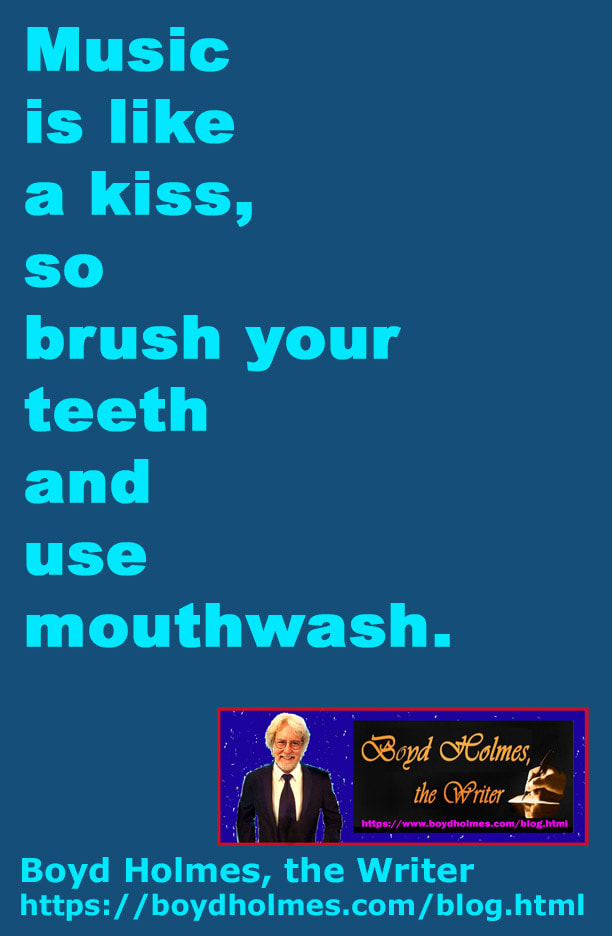
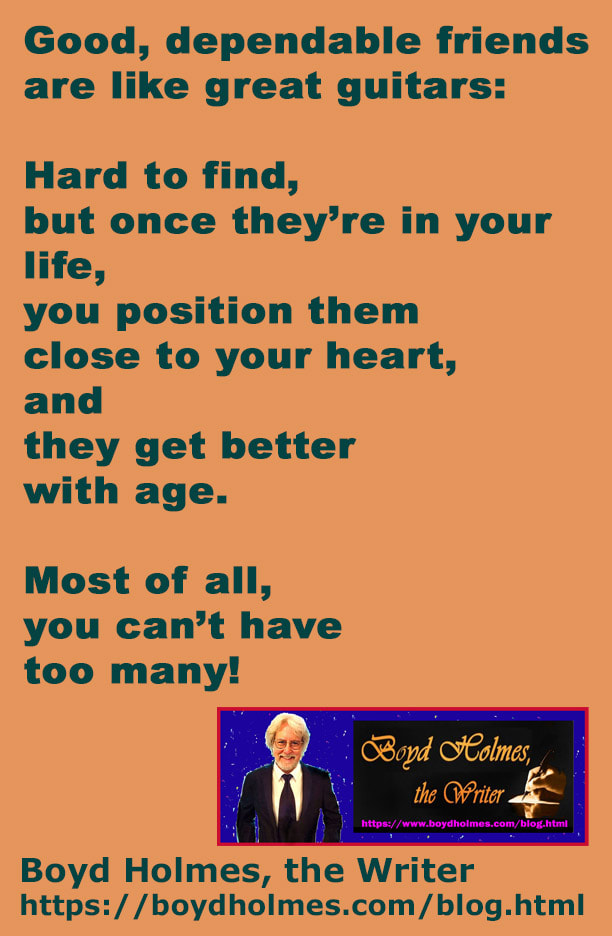
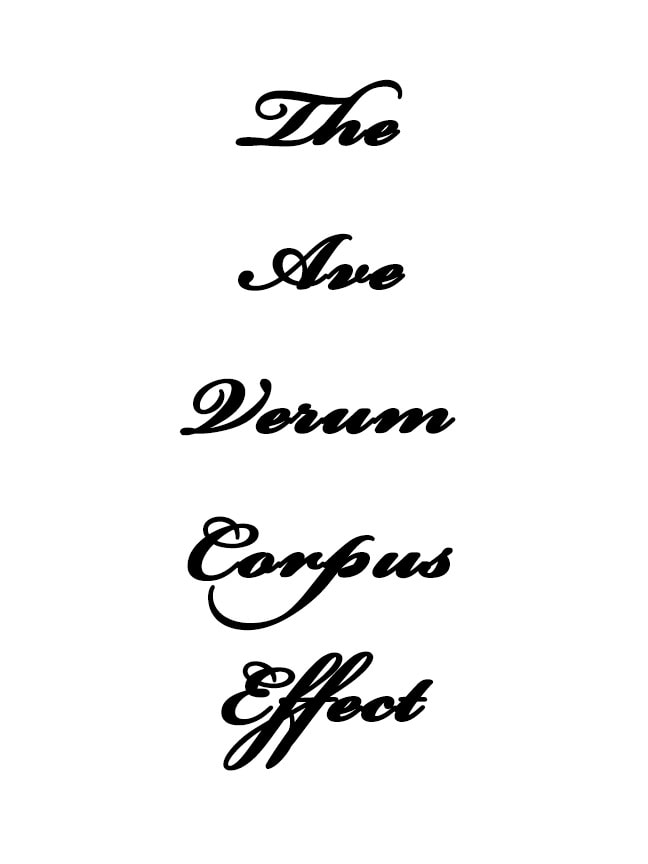
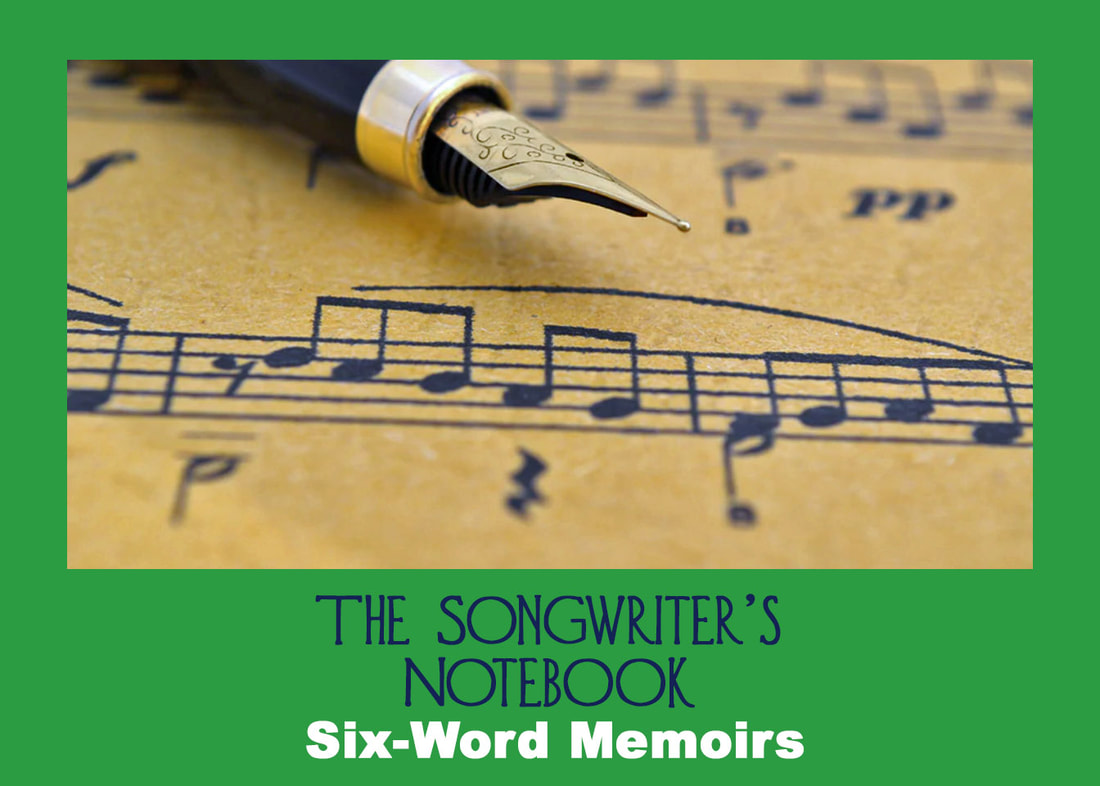
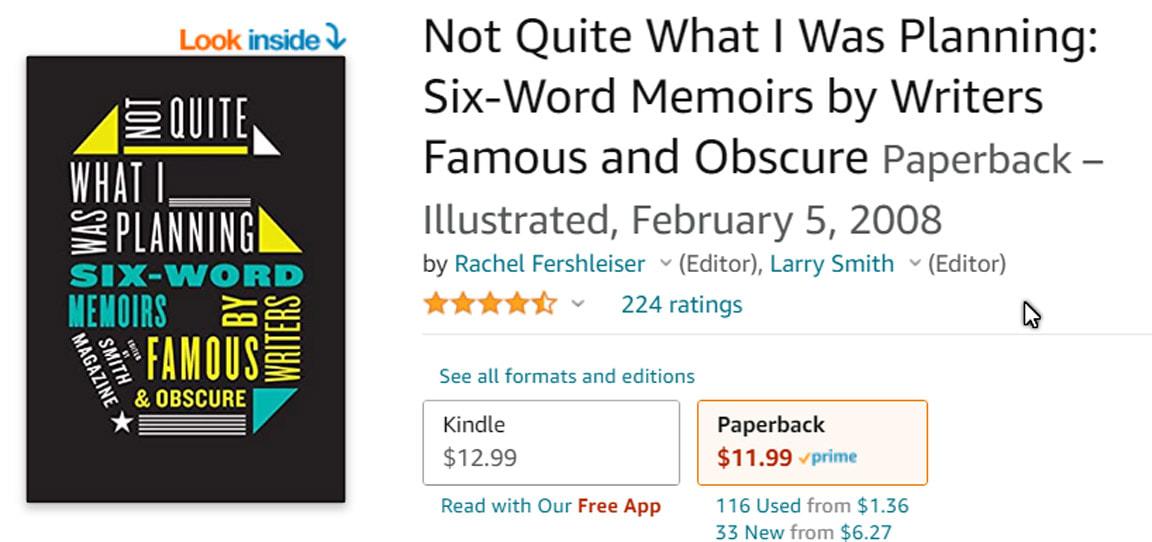
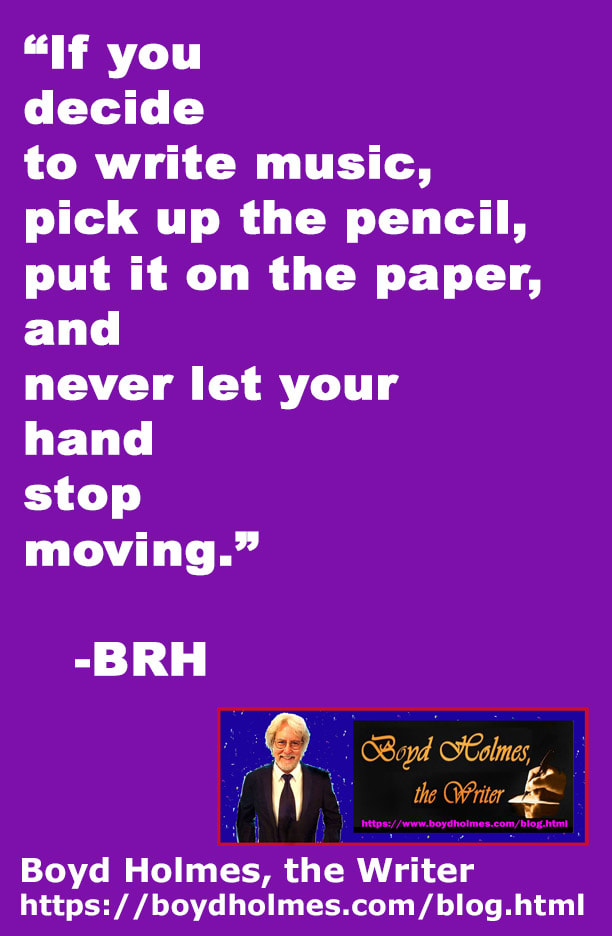
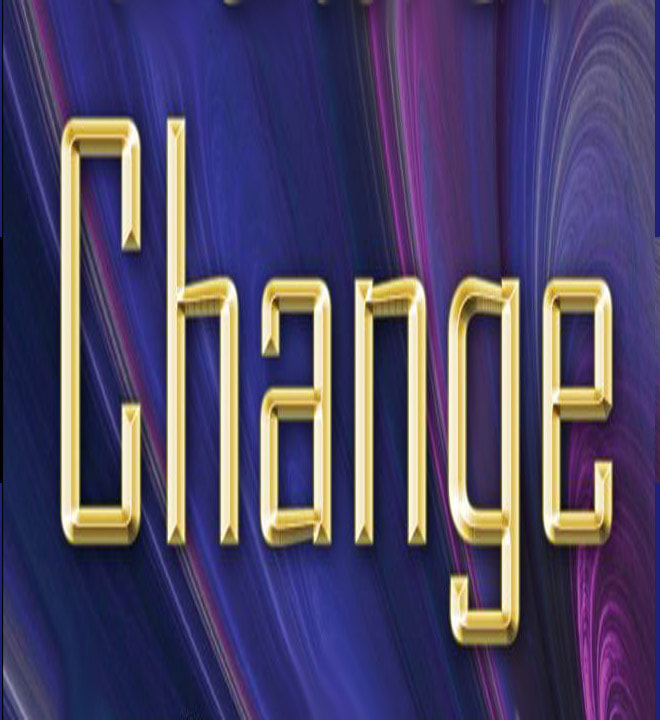
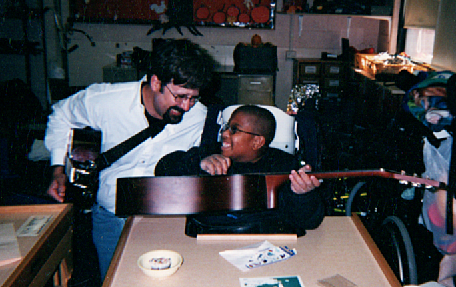
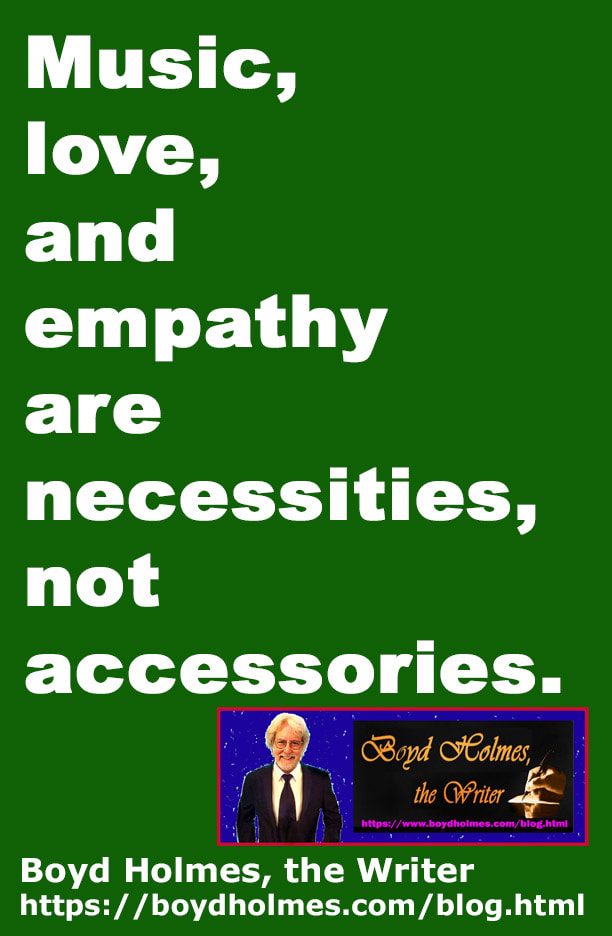
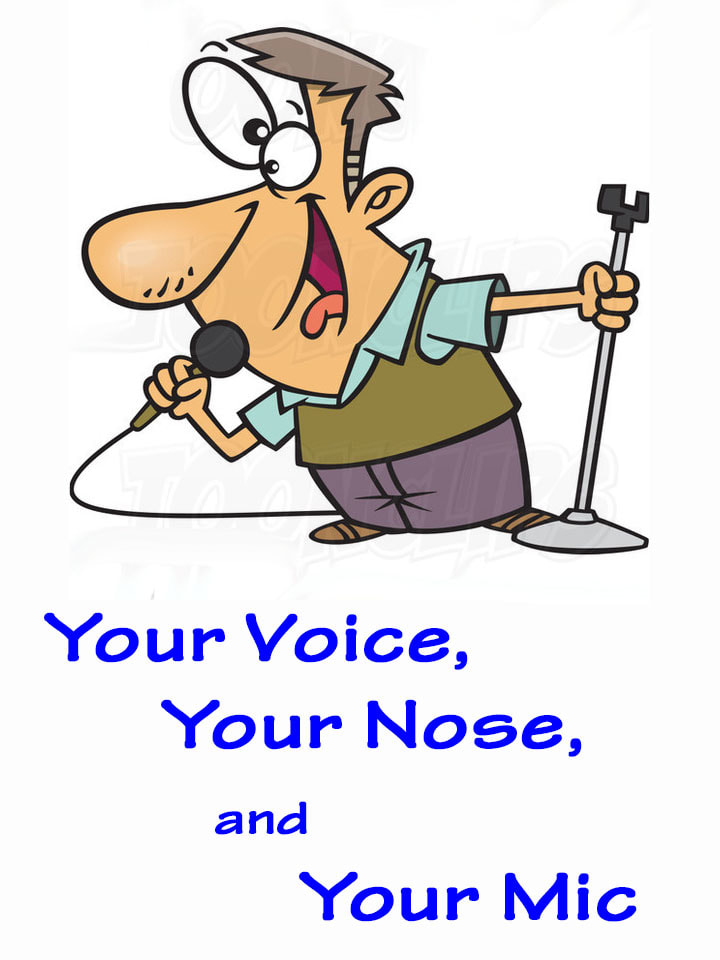
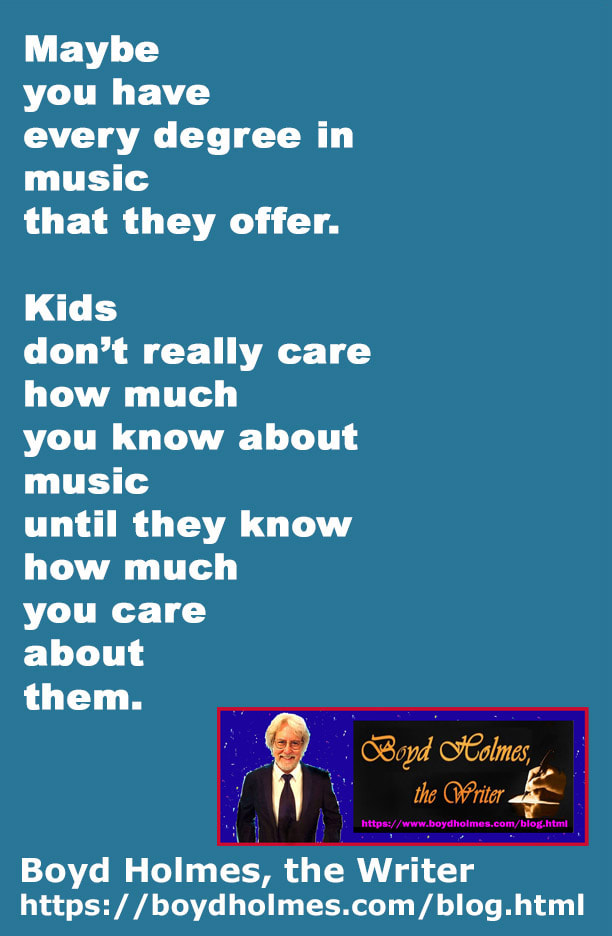
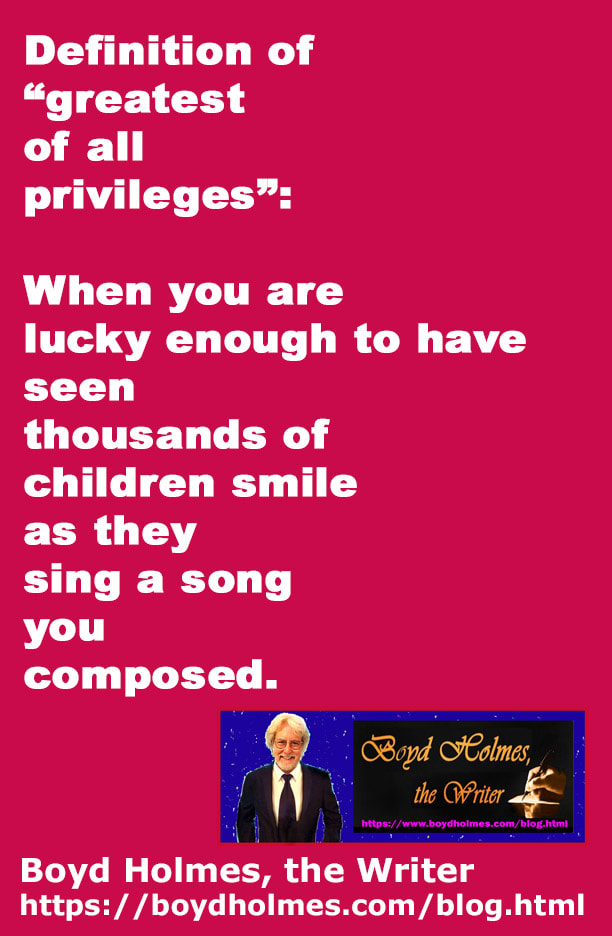
 RSS Feed
RSS Feed